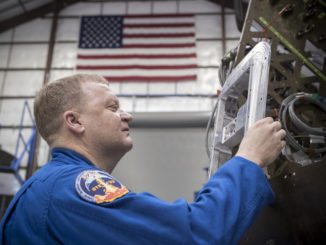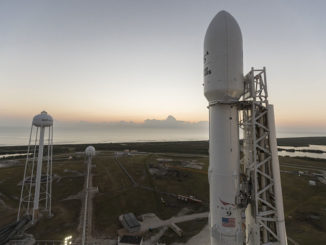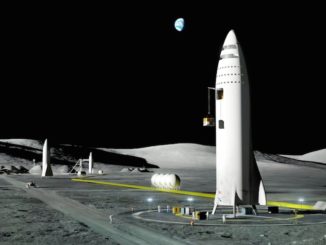
SpaceX aborted a launch attempt Thursday just three seconds before liftoff at the start of the engine ignition sequence, delaying the flight of a Falcon 9 rocket from California with 10 satellites for the U.S. military’s Space Development Agency.
The computer controlling the final phase of the countdown ordered an abort at T-minus 3 seconds as the Falcon 9 rocket was poised for liftoff from Vandenberg Space Force Base, California, at 7:29 a.m. PDT (10:29 a.m. EDT; 1429 UTC) Thursday.
The abort occurred as the Falcon 9’s engine ignitor fluid — called TEA-TAB, or triethylaluminum-triethylborane — gave off a characteristic green flash near the Falcon 9’s Merlin engines. But the sequence appeared to stop before the nine kerosene-fueled engines actually ignited.
SpaceX did not release any information about the cause for the abort. The launch team initially planned to try again to launch the Falcon 9 rocket Friday, then delayed the mission to Saturday, and again until Sunday morning as engineers continued to examine the problem that caused the countdown to stop Thursday.
Here’s a replay of the Falcon 9 countdown abort at T-minus 3 seconds at Vandenberg.
SpaceX has scrubbed today’s launch attempt for the Space Development Agency. Next launch opportunity is tomorrow, assuming the issue that caused the abort is resolved.https://t.co/CGOZQbZTNJ pic.twitter.com/uA8ZF5q2eT
— Spaceflight Now (@SpaceflightNow) March 30, 2023
The mission will launch the first 10 satellites in the Space Development Agency’s constellation of small spacecraft designed to detect and track missiles, particularly emerging threats from hypersonic missiles, then relay the tracking data to the ground for use by military forces charged with intercepting the projectiles before reaching their targets.
The first phase of SDA’s Proliferated Warfighter Space Architecture will consist of 28 satellites scheduled for launch this year as a proof of concept for the missile tracking and data relay network, followed by more than 150 additional satellites launching in 2024 and 2025 to provide an initial operational capability.
Combining conventional tactical radio links, laser inter-satellite communications, and wide-view infrared sensors, hundreds more SDA spacecraft could launch later in the 2020s as the Pentagon ramps up efforts to counter new threats from China and Russia.
The first 10 prototype satellites, eight data relay spacecraft built by York Space Systems and two missile tracking platforms manufactured by SpaceX, will head into a 620-mile-high (1,000-kilometer) orbit after liftoff on the Falcon 9 rocket on SDA’s Tranche 0A mission. Another 18 satellites will follow on a Falcon 9 launch in June for the Tranche 0B mission.
A dozen or more launches carrying SDA’s Tranche 1 satellites will begin flying in September 2024.
Email the author.
Follow Stephen Clark on Twitter: @StephenClark1.



